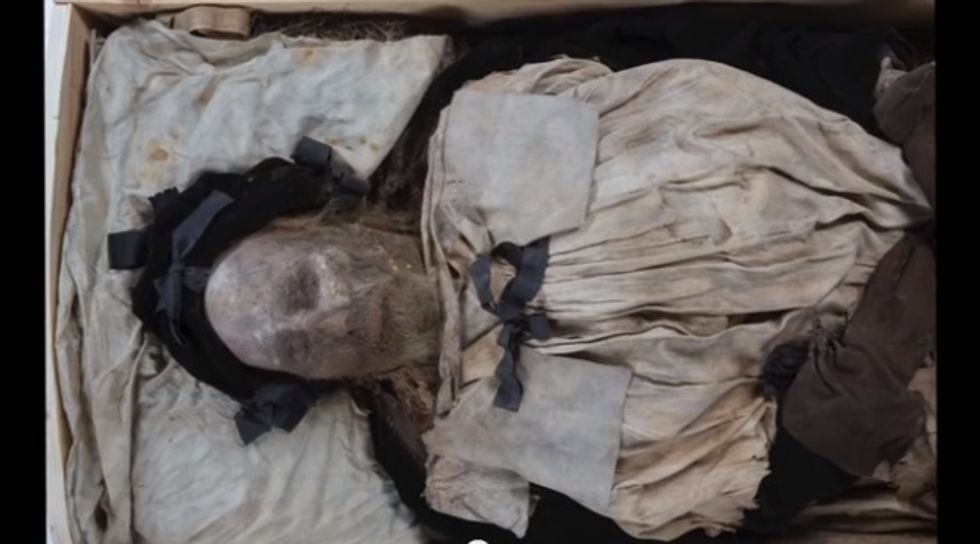
© 2025 Blaze Media LLC. All rights reserved.
Researchers Surprised by 17th Century Bishop's Remarkable State of Preservation and What They Found Hiding Under His Feet in the Coffin
June 22, 2015
"Deliberately concealed"
The more than 300-year-old remains of a Scandinavian bishop are remarkable in their preservation, but that's not all investigators found surprising.
According to researchers at Lund University in Sweden, the bishop was not buried alone.
"One of the main discoveries when we conducted the CT scanning was that Mr. Winstrup is not alone in the coffin," Per Karsten, director of the Historical Museum at Lund University, told the Guardian. "Actually, he has a companion, a small child, a five- to six-months-old fetus of a human child, and it has been deliberately concealed under his feet at the bottom of the coffin – so maybe there is a connection."

"You can only speculate as to whether it was one of Winstrup’s next of kin, or whether someone else took the opportunity while preparing the coffin," Karsten said in a statement, adding in a video about the research that he's inclined to think the latter situation is the case. "But we hope to be able to clarify any kinship through a DNA test."
According to a news release from the university, which the bishop was instrumental in founding, Winstrup died in 1697 at 74 years old and was laid to rest in Lund Cathedral. In an initial CT scan of the mummy, the researchers saw that Winstrup's internal organs were intact, which is not usually the case.
Factors that contributed to the body's state of preservation included good air flow, the coffin's natural material, illness prior to death, his burial in the winter and the climate maintained inside the cathedral.

"We can now observe that Winstrup’s mummy is one of the best-preserved bodies from Europe in the 1600s, with an information potential well in line with that offered by Otzi the ice man or Egyptian mummies," Karsten said in a statement of the mummy, which was dried naturally, not embalmed. "His remains constitute a unique archive of medical history on the living conditions and health of people living in the 1600s."
Here's Lund University's video about the research:
Through their analysis, the researchers were able to surmise based on gallstones and the condition of his teeth that Winstrup had access to fatty and sugary foods.
"His right shoulder was slightly higher than his left, due to an injury to a tendon in the shoulder," Caroline Ahlstrom Arcini, an osteologist, said, explaining more about what the researchers can learn based on the state of this body. "This would have limited Winstrup's mobility, making it difficult for him to carry out simple everyday tasks such as putting on a shirt or combing his hair with the comb in his right hand."
(H/T: io9)
Want to leave a tip?
We answer to you. Help keep our content free of advertisers and big tech censorship by leaving a tip today.
Want to join the conversation?
Already a subscriber?
more stories
Sign up for the Blaze newsletter
By signing up, you agree to our Privacy Policy and Terms of Use, and agree to receive content that may sometimes include advertisements. You may opt out at any time.
© 2025 Blaze Media LLC. All rights reserved.
Get the stories that matter most delivered directly to your inbox.
By signing up, you agree to our Privacy Policy and Terms of Use, and agree to receive content that may sometimes include advertisements. You may opt out at any time.


